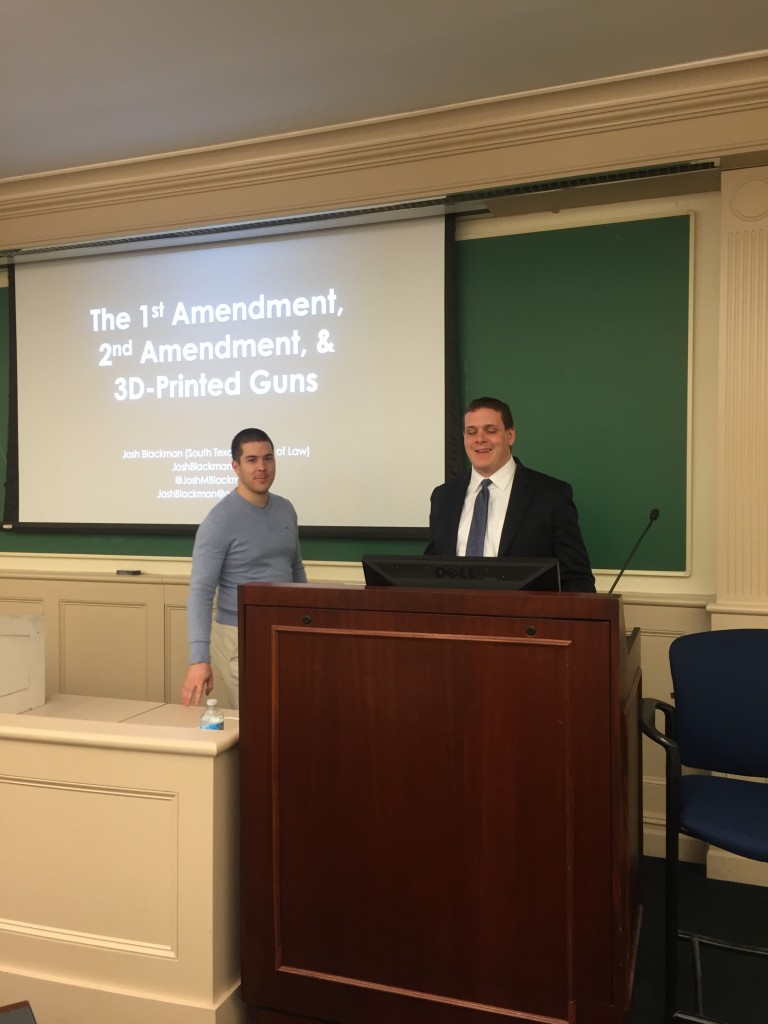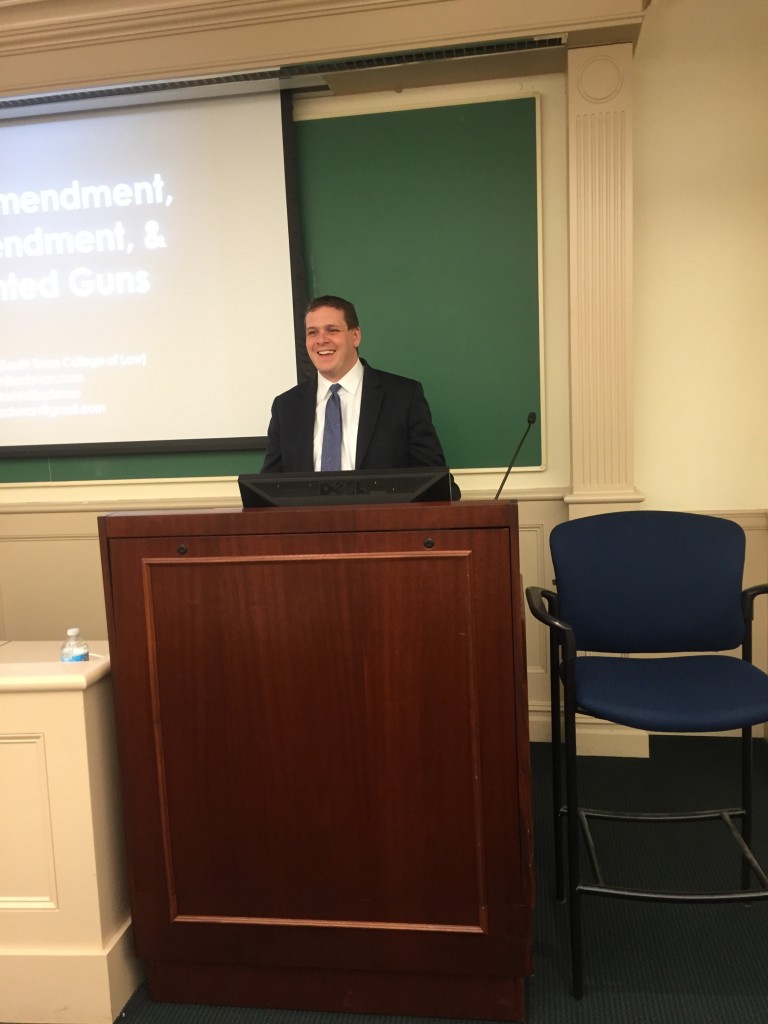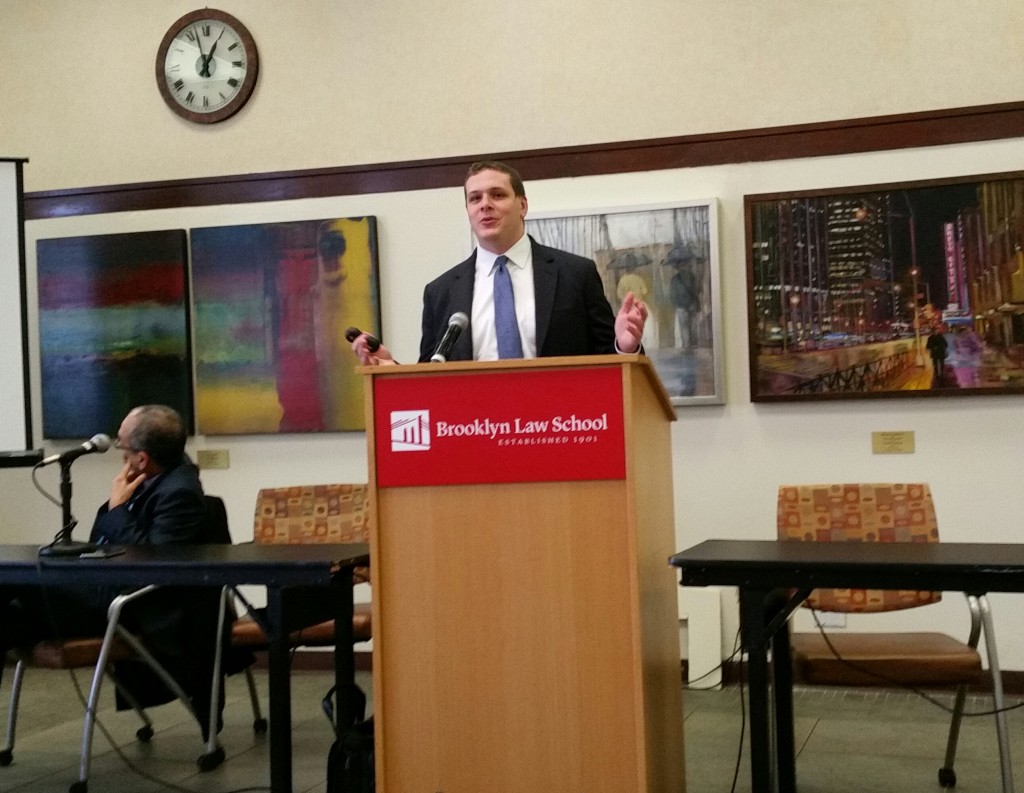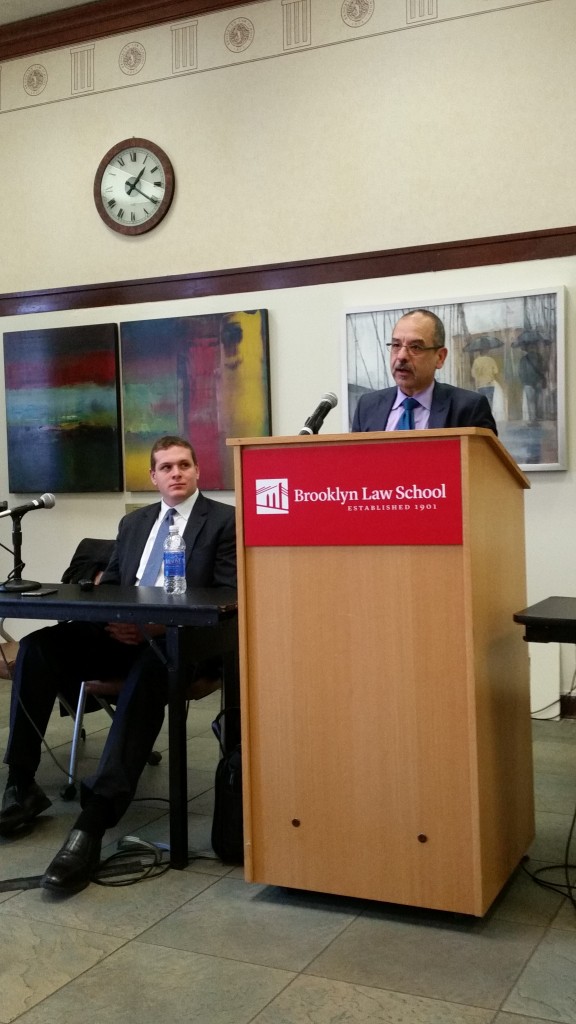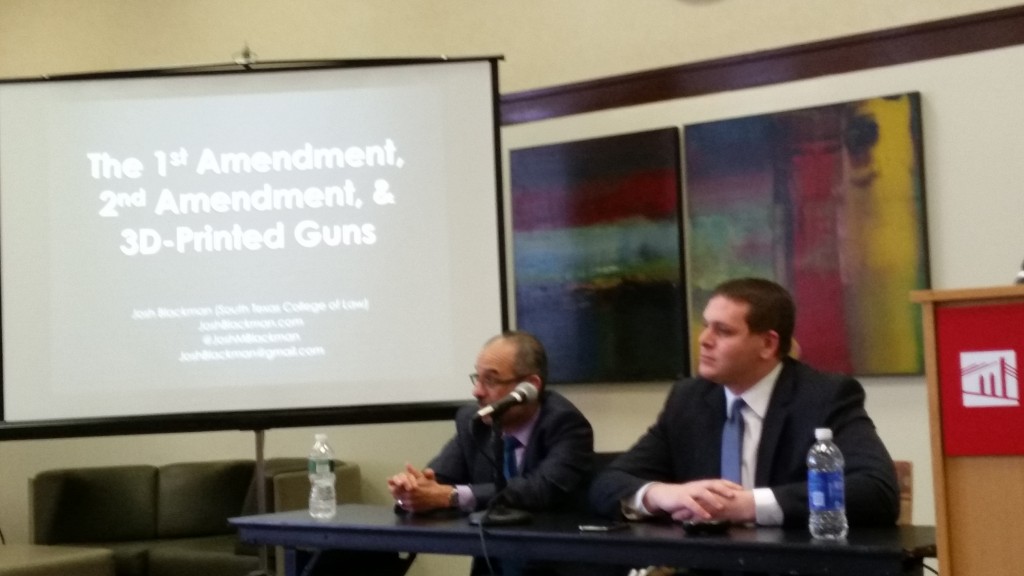This is the third part in my series about the government’s appellant brief in Texas v. United States. Part I is here about the propriety of a “nationwide injunction.” Part II discusses the government’s use of DAPA as an “incentive” to get people to sign up for deferred action. This post will address what I think is the biggest obstacle for Texas’s “driver’s license” theory of standing: What is the limiting principle? In so many constitutional cases, the question always boils down to this issue.
The government’s brief charges that this approach to standing is “seemingly limitless”:
It allows States to sue based on nothing more than their disagreement with how federal officials prioritize their limited resources in light of real-world constraints—the very choices that the Constitution and federal statutes entrust to the Executive. Allowing States to manufacture Article III standing on the basis of such incidental and attenuated consequences would allow States to assert a seemingly limitless power to embroil the federal courts in reviewing virtually any exercise of discretion by the federal government.
“Seemingly limitless” is code for “no limiting principle.” Later in the brief, the government makes the argument more forcefully:
Most fundamentally, if the incidental and attenuated costs of state services provided to aliens with work authorization were a sufficient basis to enjoin the federal government’s immigration policies, a State could attempt to use similar incidental effects to justify a vast interference with countless exercises of federal immigration enforcement discretion, upsetting both the uniquely federal interest in immigration matters and separation-of-powers principles.
The district court’s driver’s-license theory of standing threatens to radically alter the balance between the States and the federal government contemplated by Article III, particularly, but not exclusively, in the realm of immigration enforcement.
Furthermore, neither plaintiffs nor the court identified any limiting principle that would confine the district court’s conclusion to the realm of immigration.
The brief lists several different actions that the government could take that may be challenged in federal court under this theory of standing:
The court’s rationale risks allowing States to second-guess any federal policy that has some downstream effect on States. Such a theory could invite States to attempt to challenge grants of probation or supervised release for convicted criminals, or federal actions that result in individuals moving from one State to another, or indeed any federal policy that could trigger some service provided by state law. Article III provides no support for such a boundless theory of standing.
The limiting principle is a version of the slippery slope argument–if we allow standing here, then why won’t we allow standing in case X. It is a powerful legal argument that nearly defined the constitutional challenge to Obamacare. Here, the biggest challenge for Texas is not the merits, but why permitting “driver’s license standing” here will not drastically alter the power of states to challenge federal actions. I think there are several possible answers to this question.
First, the initial limiting principle concerns the linkage between the challenged non-enforcement and the claimed injury. The injury asserted by Texas is “fairly traceable to the challenged action,” the government’s non-enforcement. Under Texas law, an alien who is granted the status of deferred action is entitled to a driver’s license, which generates fixed costs for the state. The decision of the United States to grant this lawful status can be considered as the proximate cause of the injury to Texas. But for the government’s adjustment of the alien’s status, Texas would not be required to offer a driver’s license. The response to this claim is, so what? The federal government adjusts the status of millions of aliens annually, rendering them all eligible for Texas’s driver’s licenses. And all federal policies impact state law, right?
Second, contrary to the government’s assertion, it isn’t true that “any federal policy that could trigger some service provided by state law,” could provide standing under Texas’s theory. Other than immigration, the government musters up a fairly unpersuasive parade of horribles of actions that could trigger standing: “grants of probation or supervised release for convicted criminals, or federal actions that result in individuals moving from one State to another, or indeed any federal policy that could trigger some service provided by state law.” None of these actions fit the mold. The decision of an Article III judge to grant probation, and release a criminal into a community is entirely at odds with the challenged non-enforcement of federal law. Any resulting costs to the state from supervised release of a criminal are attributed to Article III, not Article II. The government also cites “federal actions that result in individuals moving from one State to another” as a possible trigger. I don’t even know what that one means. The Article IV “Privileges or Immunities” clause guarantees movements between states. States cannot discriminate against out-of-staters.
In addition to immigration status, I think veterans status may trigger some benefits under state law. Any others? I think the category is fairly finite. Usually it works the other way around–a change in state status affects some sort of federal benefit. So this slope is not quite as high and steep as the government suggests.
Third, it is important to separate the aggrieved injury for purposes of standing, and the constitutional violation. In virtually every scenario where Texas provides a driver’s license to an alien with some lawful status, the underlying granting of that status was unquestionably lawful. The mere fact that Texas suffered an injury through fixed costs does not provide a substantive cause of action. The cost of providing the driver’s license served as a concrete injury to get into court for purposes of standing. Once there is standing, the plaintiff still must plead *some* cause of action. What will those causes of action be? To the point I made in the previous paragraph, what would the cause of action be when a judge releases a defendant on supervised release? None.
The mere fact that federal inaction inflicts an injury on the state does not mean the government acted unconstitutionally, or contrary to law. Although state attorneys general are elected positions that relish in suing the federal government (remember Massachusetts v. EPA?), filing a frivolous claim–even with some injury–will quickly be turned away out of court. I suppose that State AGs could continue to file pointless suits based on “driver’s license” standing, but they would be promptly tossed. In this sense, the limiting principle is that the overwhelming majority of instances where inaction creates an injury, will be perfectly lawful. (And by now, you should recognize that Texas’s challenge is not frivolous).
Fourth, a related arguments is that states could pass laws in order to generate standing. There is certainly a threat that a state could pass a law, knowing full well that some federal policy will conflict with it, in an effort to generate standing. Virginia attempted something like this in 2010, where it enacted a law stating that any federal law that imposed an insurance mandate would trigger an injury which the Commonwealth could challenge in court (I am grossly oversimplifying here). The courts correctly rejected this argument, which bordered on a parens patriae theory of standing, where the state steps to defend the rights of the individual. Here, Texas is not attempting to protect the rights of individuals, but defending an injury it suffers in its sovereign capacity.
Further, the government asserts that the Texas law results in a “self-inflicted injury,” as Texas could change the law to avoid this injury. I think this argument fails for two reasons. First Arizona, which had a similar license regime, attempted to change its law to disqualify DACA beneficiaries from receiving a license. The DOJ intervened, and argued that this classification was unlawful. Now, DOJ has attempted to dial this argument back, and argue that Texas could exempt DAPA beneficiaries, if they do so in a lawful manner. Color me skeptical. Even if this is true–doubtful–several of the party states in this suit are in the 9th Circuit, and are bound by that precedent, so this argument is somewhat unhelpful. In any event, this law existed well before DAPA and DACA, and there can be no argument that Texas colluded to generate standing. Second, I think it would be a radical argument that a state should be required to change its laws in order to avoid an injury from an executive action (that is arguably itself unlawful). Legislation and the police power are the ultimate attribute of sovereignty, and states should and could not be compelled to act in order to prevent a collision with a President’s policies.
Fifth, these cases are going to be very rare. The most common example where local governments will claim to be injured by inaction involve situations where the Executive did not give them the money they were due. In Train v. City of New York, the city sued the Nixon Administration for failing to disburse funds allocated by Congress. In Clinton v. City of New York, the Big Apple sued President Clinton for exercising his line-item veto and not funding local projects. But never before has a state (to my knowledge at least), filed suits alleging a violation of the President’s duty of faithful execution, where a state didn’t expect money. The fact that no state has ever attempted a suit on the scale of Texas’s is unprecedented in and of it self, but also a reflection of how unprecedented DAPA was (as recognized by the OLC memo).
Sixth, another aspect of our standing jurisprudence is that the injury must be “redressable.” This is an important limitation on suits alleging non-enforcement. With respect to the House of Representative’s suit against the Secretary of HHS for failing to enforce the employer mandate, one of the biggest obstacles is redressability. Let’s assume the court finds that the Take Care clause was violated, and the Secretary of HHS failed to discharge his constitutional duty. Then what? Do we have a court order, ordering the Secretary to implement the employer mandate? Would this take the form of mandamus? This hypothetical gives me serious doubts that standing would be appropriate in that case. But in the case of Texas, the scope of relief is really, really narrow. The court would not order the President to do anything! There would be no forced deportations. (Judge Hanen made this point clear during the stay hearing–the government can engage in the prioritization of removal in the absence of DAPA). Rather, the November 24, 2014 memorandum would be enjoined, and the ex ante status quo would be restored. Then, no licenses would be issued. That’s it. Here, redressability is quite simple, and makes the case for standing stronger.
Seventh, from a policy perspective, suits over injuries to states from non-enforcement may reinforce the separation of powers, rather than frustrate them. Consider Heckler v. Cheney, the canonical non-enforcement case. Here the death row inmate claimed an injury from failing to enforce drug and safety laws for his lethal injection. Although the court found that the policy was non-reviewable under the APA, there was no suggestion that the prisoner lacked a concrete interest for purposes of Article III–he was to be executed with the drugs. In virtually every scenario where the government takes some action, even a related non-enforcement will cause a harmful injury to someone, and that party will have standing.
DAPA presents a different scenario. Rather than the non-enforcement of the law inflicting a harm on individuals–such as Cheney–DAPA provides a benefit. The millions of DAPA beneficiaries stand to gain quasi-lawful presence, work authorization, the earned income tax credit, social security, etc. Not a single individual who is affected positively by this non-enforcement would bring suit. A similar dynamic applies to other instances of non-enforcement, such as the failure to enforce Obamacare’s individual and employer mandates. Businesses and individuals who are exempted from the payment of penalties will not bring suit. This is the dirty little secret of the Obama Non-Enforcement Doctrine–it’s okay to disregard the law when no one is injured, as the inaction is insulated from judicial review.
I’ve written in several places how this non-enforcement poses an existential threat to the rule of law. In the era of gridlock and non-enforcement, where Presidents can pick and choose what laws they like, and those non-enforcements do inflict injuries on injuries, these challenges can reaffirm the separation of powers, where Congress refuses to. In an article (at some point) I would like to write about the role of State Attorneys General, supporting the “special solicitude” of the states, in bolstering federalism. This Texas suit may be an important development in the doctrine.
These thoughts are still tentative, and I will develop them further. But any challenge here will have to be able to answer the “limiting principle” question.
